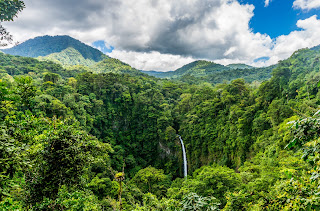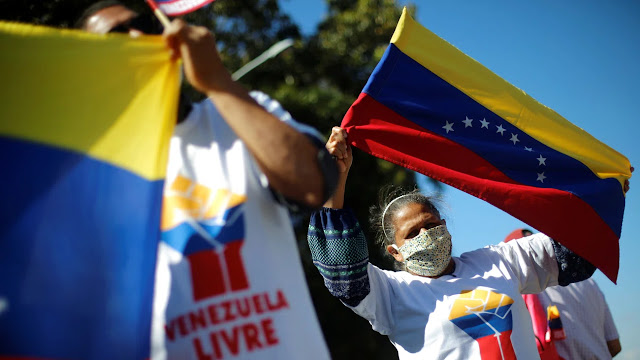The Politics of the Environment in Costa Rica
Costa Rica has become the first country in Latin America to begin reforestation. Unlike every other country in the region, the rainforests in Costa Rica are growing rather than shrinking. This is not a feat that happened overnight, in fact in the 1970's Costa Rica had the highest rate of deforestation in Latin America. So how did they get from cutting down the most trees to growing their forests in 50 years?
It all starts with Costa Rica's political stability and its Constitution. Costa Rica has been continuously classified as a democracy since 1949. This means that, unlike Mexico, they have had elections where 2 or more parties have been competitive, and that, unlike Argentina, Brazil, and many others, there has always been a peaceful transition of power. Additionally, Costa Rica has been able to keep the same Constitution in place this whole time. Costa Rica's 1949 Constitution is especially important in the narrative because it has key articles giving rights and protections to the environment. Articles 50 and 89 both guarantee Costa Ricans the right to a healthy and thriving environment, and preserve the country's "natural beauties". While these principles have not always been followed, they do provide solid footing for legislation aimed at protecting the environment.
Both political parties in the country, the Christian Unity Party and the Party of National Liberation, have adopted environmentalism as part of their platform. The process of reclaiming the forests really picked up in 2006 with the election of the PLN's Oscar Aires. Aires ran on a platform of environmental reform, with a message of making Costa Rica carbon neutral. He called it a political third way, wanting to reclaim energy and environmental independence for Costa Rica while still growing the economy. This third way has been adopted by subsequent administrations as well.
Getting Costa Rica to a place where reforestation is happening, and to a place where it is carbon neutral in the future, are almost non-partisan issues. The Costa Rican government has implemented many policies to promote reforestation. For example, there is a fund that allows the government to subsidize farmers so that they do not cut down forests for new farmland. The Costa Rican government also restricts the number of logging permits it hands out and has a national forestry commission that diligently monitors the forests. These seem like policies that would be a huge economic drain on the country, however Costa Rica's GDP has continually risen over the last 20 years. How does this happen?
Eco-tourism has become a massive money maker for Costa Rica in recent years. Almost half of the country's GDP comes from some form of tourism, and all of this money would not be possible without the rainforests. People flock to Costa Rica each year to experience the gifts the forests have to offer. In this way the forests pay for their own protection, and become a renewable resource as people keep coming each year. The money from tourism has also allowed Costa Rica to have some of the highest levels of development and standard of living in all of Latin America.
The US would be wise to support efforts like Costa Rica's throughout the region. Latin America is home to the largest rainforest in the world, and it is slowly but surely being cut down for economic gain. If the US were to fund subsidy efforts like those found in Costa Rica it could go a long way towards reversing deforestation. The US gains from this in the long term as well. The costs of global climate change will be immense for the US, not only in dollar terms but also with regards to security. By helping to establish, finance, and vocally support preventative measures like those found in Costa Rica, the US would be investing in its own future as well as helping to provide new sources of income and security for nations in Latin America that have historically been lacking in these areas.
- Evan
Bibliography
Corbley, Andy. “How Costa Rica Slowed, Stopped, Then Reversed Deforestation in Their Rainforests.” Good News Network, July 30, 2020. https://www.goodnewsnetwork.org/costa-rica-slows-stops-and-reverses-deforestation/.
Costa Rican Federal Government. Constitution of 1949. Constituent Assembly. San Jose: 1949, website https://www.constituteproject.org/constitution/Costa_Rica_2011.pdf
Meyer, Peter J. "COSTA RICA: BACKGROUND AND U.S. RELATIONS." Current Politics and Economics of South and Central America 4, no. 1 (2011): 131-150. http://libproxy.lib.unc.edu/login?url=https://search-proquest-com.libproxy.lib.unc.edu/docview/1707985370?accountid=14244.
Roberto, Dobles Mora. "COSTA RICA'S COMMITMENT." UN Chronicle 44, no. 2 (06, 2007): 42-43,47. http://libproxy.lib.unc.edu/login?url=https://search-proquest-com.libproxy.lib.unc.edu/docview/218152379?accountid=14244.
Wood, Johnny. “Costa Rica Has Doubled Its Tropical Rainforests in Just a Few Decades. Here’s How.” World Economic Forum , June 13, 2019. https://www.weforum.org/agenda/2019/06/costa-rica-has-doubled-its-tropical-rainforests-in-just-a-few-decades-here-s-how/.






Comments
Post a Comment